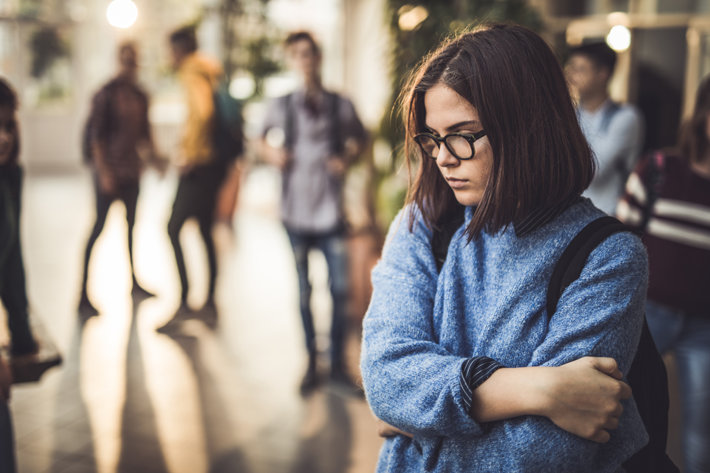The State of Teen Drug Use: What Are the Real Numbers?

President John F. Kennedy said, “Children are the world’s most valuable resource and its best hope for the future.” Most Americans would echo that sentiment. We want the best for our children.
It’s bad enough when an adult uses drugs and damages their life, but it strikes most of us as much worse if it happens to a child. This is an understandable sentiment because a child risks their entire future if their path is derailed by drug use.
Knowing the current numbers for adolescent drug users can help us determine how hard we need to work to save our future generations. Fortunately, there are two surveys that provide us with annual information on their drug use.
- The Monitoring the Future surveys tap into the habits of students of 8th, 10th and 12th grade; and young adults from 18 to 22, either in or out of college.
- The National Survey on Drug Use and Health surveys Americans aged 12 and up.
This report is drawn from these three annual surveys.
Marijuana Use
Among 12th grade students, more than one-third smokes marijuana each year. More than one in four 10th graders have done the same.
This number jumps up significantly by the time these youth are college-aged. Approximately 44% of these young adults use marijuana each year. This is the highest rate since the 1980s. This change is not surprising considering the widespread campaigns to legalize medical and recreational marijuana use, which create the impression that the use of a legal drug is both normal and harmless.
As documented by the National Institute on Drug Abuse, marijuana is addictive, causes IQ loss, can cause hallucinations, paranoia, suicidal thoughts and symptoms of schizophrenia. Anything we do that gives either youth or adults the impression that this is a harmless drug is doing them a disservice.
Daily Use of Marijuana
Nearly 7% of American seniors in high school are daily marijuana users. Among college students, nearly 8% are daily users and 13% of the same-aged people who are not in college are daily users.
What does “daily user” mean? It means that those individuals consume marijuana at least 20 days out of each 30-day period.
“[p]ersistent cannabis use was associated with neuropsychological decline broadly across domains of functioning…”

A 2012 study found that “[p]ersistent cannabis use was associated with neuropsychological decline broadly across domains of functioning….” Neuropsychological decline refers to the relationship between the nervous system and mental functions like behavior, mood, learning, memory, language and emotion.
There were “more cognitive problems for persistent cannabis users…concentrated among adolescent-onset cannabis users, with more persistent use associated with greater decline.” Stopping cannabis use did not restore these functions among those who started using the drug as an adolescent and then stopped as an adult.
This survey determined that those who were frequent marijuana users over a long period of time typically suffered a loss of six IQ points. Those who used marijuana the most persistently had the greatest risk of IQ loss.
According to Nora Volkow and other researchers, chronic marijuana users also have an increased risk of becoming drug-addicted later on.
Initiation of Marijuana Use
Every year, 3.5 million Americans of any age try marijuana for the first time. Of these, 1.4 million are between the ages of 12 and 17. According to the National Survey on Drug Use and Health, this statistic for 12 to 17 year-olds has been relatively flat since 2002. This aligns with the Monitoring the Future survey, which shows marijuana use statistics relatively flat over the same time period.
However, the number of young people thinking that regular use of marijuana poses a “great risk” has crashed. In the early 1990s, nearly 80% of high school seniors thought regular use of marijuana would be highly risky. By 2019, only about 35% of them thought this would be dangerous. Similar declines were seen among 8th and 10th-grade students.
Vaping Marijuana
In 2017, the annual Monitoring the Future survey of adolescent drug use began asking youth about their vaping habits. In 2018 and 2019, the number of youth vaping marijuana increased dramatically from the baseline obtained in 2017. From less than 5% of high school seniors vaping marijuana in 2017, the numbers rose to nearly 15% in 2019. There was a slight decline in 2020.
Prescription Drug Abuse

Abuse of prescription drugs such as amphetamines, sedatives, tranquilizers, or narcotics has been on a decline.
Annual non-medical use of amphetamines (usually drugs prescribed for problems with focusing on tasks) has decreased a significant 3.2% since 2015. By 2020, 6.5% of college students were misusing this drug, the lowest level of the past decade.
Still, hundreds of thousands of high school and college students initiate misuse of prescription drugs every year.
- 650 teens start to misuse stimulants every day, a reduction from earlier years.
- 1,000 young adults start to misuse stimulants every day.
- The number of teens starting to misuse prescription drugs is 670 per day.
- The number of young adults (18 to 25) starting to misuse pain relievers is 1,100 per day.
- The percentage of students abusing prescription stimulants dropped to about 5% for 8th, 10th and 12th-grade students since its peak of 26% in 1981.
- Among 12th grade students, misuse of prescription painkillers has declined substantially from 9.2% to 2.1% in 2020.
- In all grades, the number of youth saying that sedatives, tranquilizers or pain relievers such as OxyContin or Vicodin were easy to get or very easy to get declined significantly since 2010.
Cough Medicine
The numbers of 8th, 10th and 12th-grade students abusing cough medicine jumped up significantly in 2020, even though the percentage is still low. For 8th grade students, the jump went from 3.2% abusing this drug in 2019 to 4.6% in 2020.
Alcohol

In any 30-day period, one in three high school seniors engages in the consumption of alcohol. For 10th and 8th graders, the numbers are 20% and 10%.
Binge drinking has declined dramatically since its high in the early 1980s. At that time, 41% of high school seniors binge drank, but in 2020, fewer than 20% did. Similar declines at lower levels were seen for 8th and 10th-grade students.
Despite this decline, only half of each grade level felt that having five or more drinks in a row once or twice each weekend was a “great risk.” This statistic indicates that much more preventative and educational work needs to be done among this group.
A little less than three out of every hundred high school seniors were drinking alcohol every day in 2020, the highest number since 2008.
The likelihood that a person will drink alcohol is considerably higher among college students than among others of the same age who are not in college. Even so, binge drinking among young adults has declined significantly, falling from 40% in the early 1980s to 24% in 2020.
Actions Needed
The good news is that there are declines in the adolescent and young adult use of most drugs. Parents educating children on the dangers of drugs, drug prevention classes in schools, celebrities setting an example of being drug-free—it all helps.
The more we can keep youth from starting to use drugs, the fewer people will need addiction recovery care five or ten years down the line. At this point, the greatest losses of life due to drug overdoses occur in groups of people 25 to 34 years of age and 35 to 44.
In Los Angeles County in 2020, the highest number of losses occurred among individuals aged 45 to 64. Still, there were far too many young lives lost in this region. Between March and December 2020, 27 youth aged 12 to 17 were lost to drug overdoses and, incredibly and tragically, eight children aged 11 and under.
When a child or young adult is damaging their own life with drugs or alcohol, the most important thing is to get them the help they need to stop using drugs. Whether it’s alcohol, marijuana or heroin, they are going to lose function and enjoyment of life if they are using drugs.
For a severely addicted person, the help they need is usually a residential rehab so they have around-the-clock supervision. There are many others who have been smoking too much weed or drinking too much alcohol, but they really aren’t addicted. These individuals may just need more interest, supervision and support while they plan a more interested and productive life.
Sources:
- https://nida.nih.gov/publications/drugfacts/marijuana
- https://www.pnas.org/content/109/40/E2657
- https://www.ncbi.nlm.nih.gov/pmc/articles/PMC6223748/
- http://www.monitoringthefuture.org/pubs/monographs/mtf-overview2020.pdf
- https://www.samhsa.gov/data/sites/default/files/reports/rpt29393/2019NSDUHFFRPDFWHTML/2019NSDUHFFR090120.htm#init9
- http://www.monitoringthefuture.org/pubs/monographs/mtf-vol2_2020.pdf
Reviewed and Edited by Claire Pinelli; ICAADC, ICCS, LADC, LCDC, RAS, MCAP


 ®
®